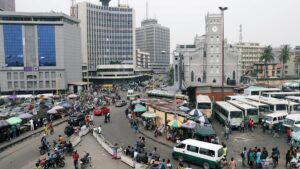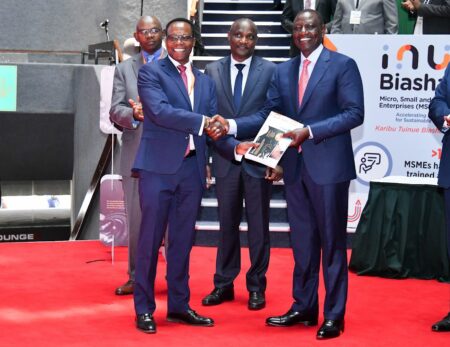Regional bank Equity Group Holdings has announced a 98 percent growth in half year profits to Sh17.9 billion up from Sh9.1 billion registered the previous year.
The Group’s Managing Director and CEO Dr James Mwangi said attributed improved performance to the defensive and offensive strategy, which they adopted at the onset of the COVID-19 pandemic.
As such, deposits registered a 51 percent growth to Sh820.3 billion up from Sh543.9 billion, while long term borrowed funds grew by 78 percent to Sh102.3 billion up from Sh57.6 billion.
Net Loans and advances grew by 29 percent to Sh504.8 billion up from Sh391.6 billion, while investment
in Government securities grew by 46 percent to Sh315.5 billion up from Sh216.4 billion resulting in 50 percent
growth in Total Assets to Sh1.12 trillion up from Sh746.5 billion.
The CEO also revealed that the strategy led to a 33 percent growth in topline Total Income to Sh51.6 billion up from Sh38.7 billion driven by a 26 percent growth in Net Interest Income of Sh31.2 billion up from Sh24.6 billion and a 45 percent growth in Non-Funded Income of fees, commission and transactions to Sh20.4 billion up from Sh14.1 billion.
“The defensive approach focused on high asset quality, strong capital and liquidity buffers that saw the Group present a strong non-performing loans (NPL) coverage of 92 percent up from 73 percent the previous year attributed to a decline in gross non-performing loans by Sh1.3 billion from Sh61.2 billion to Sh59.9 billion.
Loan loss provision declined by 66 percent from Sh7.7 billion to Sh2.6 billion to register cost of risk of 1.2 percent down from 4.2 percent.

During the six months period, net non- performing loans declined by Sh5.4 billion from Sh28.3 billion to Sh22.9 billion due to the aggressive provisioning the previous year under the defensive strategy.
Of the Sh171 billion COVID-19 restructured loan book, Sh162 billion is categorized as performing with Sh103 billion having resumed repayments, Sh6 billion fully repaid, Sh92 billion up to date in repayment and
Sh5 billion non performing.
Here is Kenya’s best bank in 2019
Only Sh64 billion remains under COVID-19 moratorium constituting only 11 percent of the entire loan book.
During the period under review, total operating costs grew by 4 percent to Sh27.8 billion against a 33 percent growth in total income to Sh51.6 billion driving profit before tax up to Sh23.8 billion up from Sh12 billion
a growth of 99 percent.
Efficiency gains saw Cost Income Ratio decline marginally to 48.5 percent from 48.8 percent driven by a reduction of cost of funds to 2.6 percent down from 2.9 percent.
Return on Average Assets (ROAA) grew to 3.3 percent in spite of the 50 percent expansion in Total Assets while Return on Average Equity (ROAE) grew to 25 percent up from 15.4 percent in spite of 26 percent growth in Shareholders Funds. Earnings per share grew by 95 percent to Sh4.7 up from Sh2.4.
Liquidity buffers saw cash and cash equivalent register a growth of 154 percent to Sh219.5 billion
up from Sh86.6 billion with Liquidity Ratios rising to 62.4 percent up from 54.2 percent with Loan to Deposit Ratio declining to 61.5 percent down from 72 percent.
Total capital to risk weighted assets stood at 17.6 percent while core capital to risk weighted Assets stood at 14.1 percent as at 30th June positioning the business ready for accelerated growth.
“The strong capital and liquidity ratios have positioned the Group well for continued execution of the
offensive strategy particularly in light of improving asset quality and operational efficiency and an
improving operating environment,” added Dr. Mwangi.
The 6 countries within which the Group operates have projected strong GDP growth rates; Kenya 7.6 percent,
Uganda 6.3 percent, Rwanda 5.7 percent, South Sudan 5.3 percent, DRC 3.8 percent and Tanzania 2.7 percent with fairly stable Micro Economic Environment, making the Group well positioned to continue with its
offensive and defensive strategy for resilience, agility, recovery and rapid growth.
Mwangi said that the regional approach with Kenya now being only 60 percent of the Group balance sheet mitigates national shocks and sovereign risks.
“Group efficiencies shared with the subsidiaries are quickly translating regional growth to value creative growth, with majority of the regional subsidiaries Return on Average Equity being higher than their cost of capital.”
Equity group counts on regional growth despite 3% profit drop











